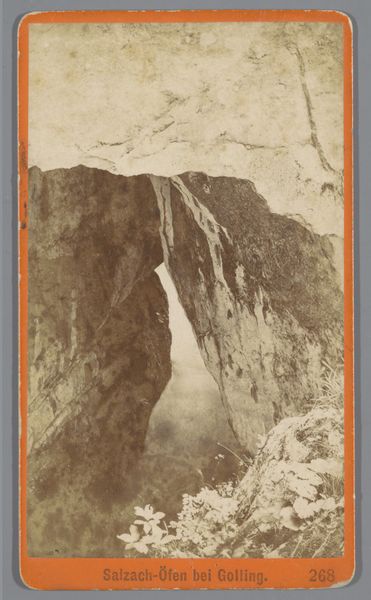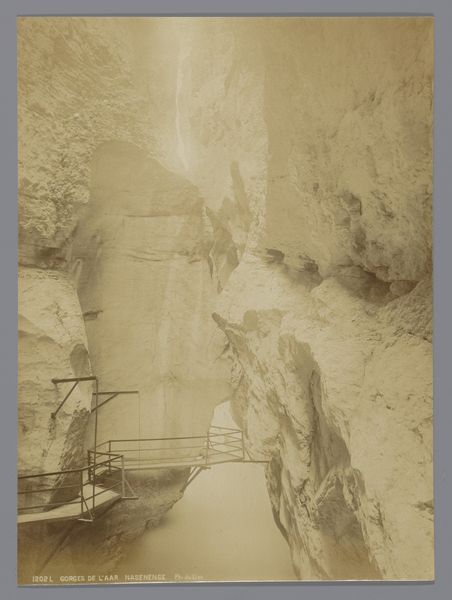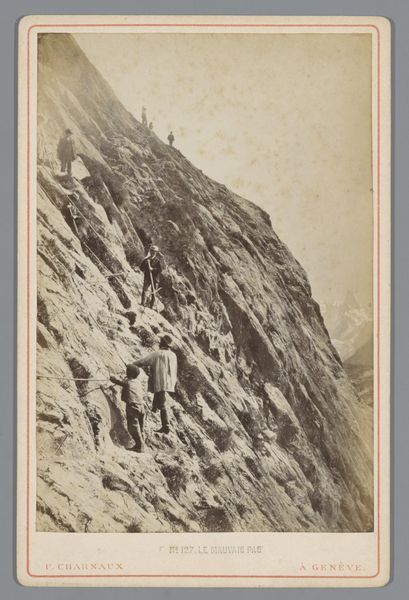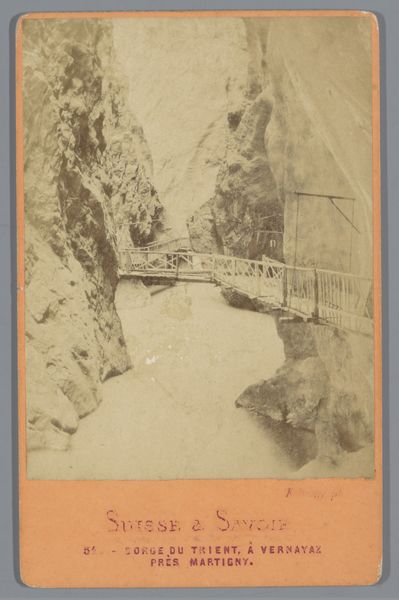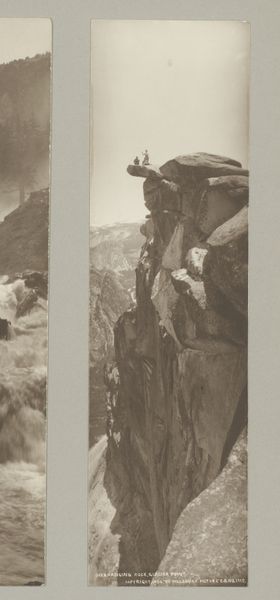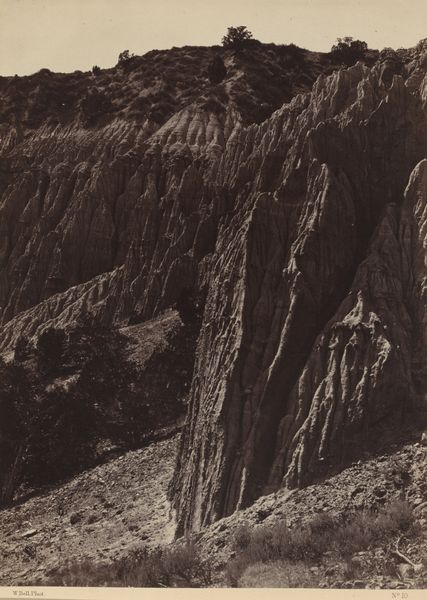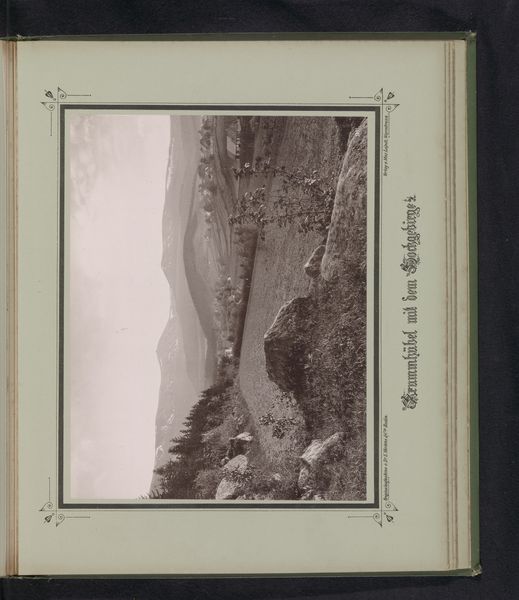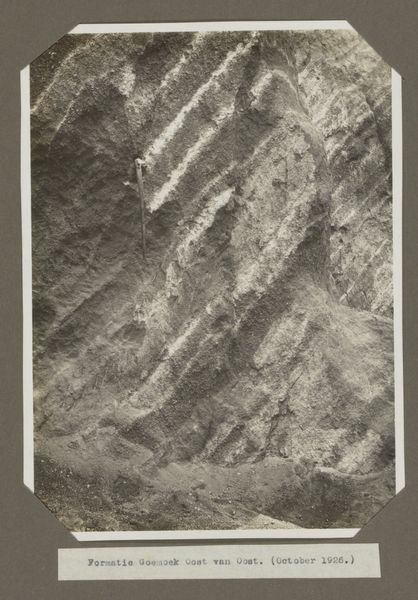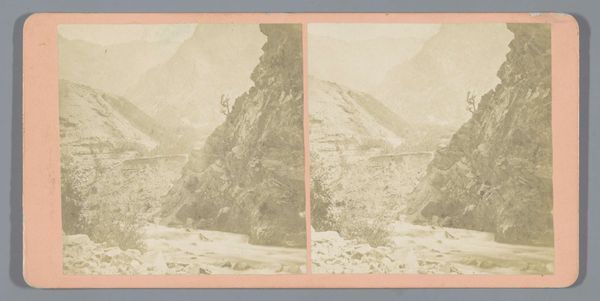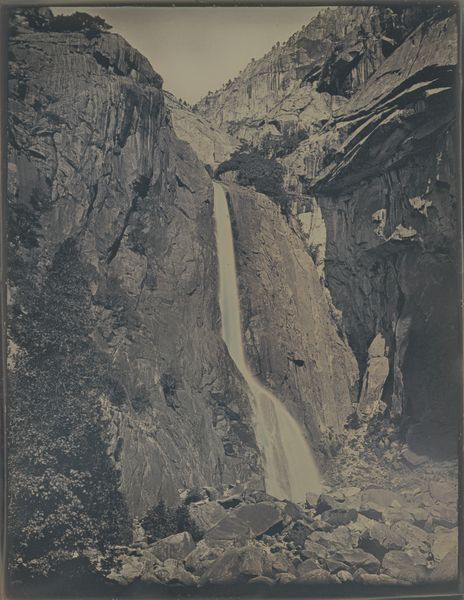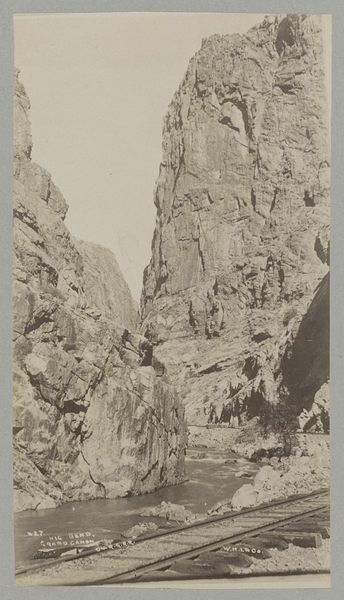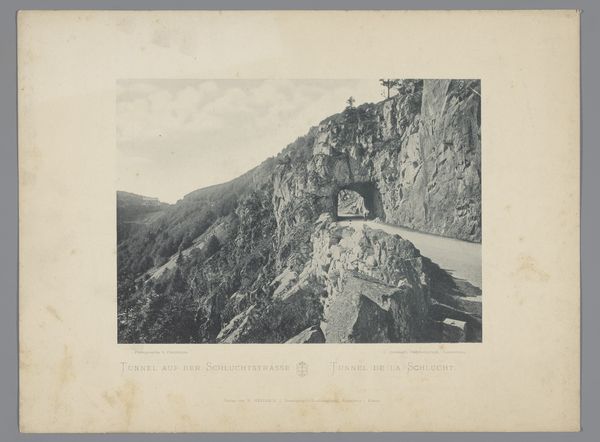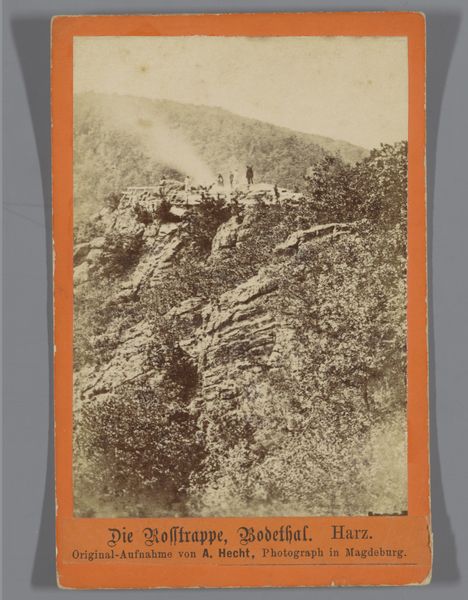
photography, gelatin-silver-print
#
pictorialism
#
landscape
#
photography
#
mountain
#
gelatin-silver-print
Dimensions: height 100 mm, width 62 mm
Copyright: Rijks Museum: Open Domain
Curator: This gelatin-silver print by Arthur Gabler, titled "Gemmipas, Leukerbad," transports us to the Swiss Alps sometime between 1873 and 1888. Editor: Immediately, I feel a sense of sublime vastness, almost intimidating. The muted tones give it a ghostly, dreamlike quality. It’s as if the mountain itself is a faded memory. Curator: Indeed. Gabler’s landscape photography, particularly within the Pictorialism movement, often sought to elevate photography to the level of fine art, emphasizing artistic expression over pure documentation. We see the use of soft focus, manipulating the chemical process, and choices of composition all leaning to those objectives. Editor: Right. And it is not without issues that such visual strategies also romanticize landscapes while potentially glossing over colonial exploits and industrial expansion impacting marginalized communities living in the area. Do we ever challenge the viewer on issues of class, gender, race and access at the time of its making? Curator: That is certainly relevant context when interpreting Gabler's piece. At the time the romantic gaze that was popular, was largely associated with aristocratic audiences and not commoners. But do you feel that by simply omitting human subjects from this alpine vista, is Gabler implicitly endorsing a vision that is aligned to the interest of the time, maybe that this a scene without visible labour is an elitist proposition? Editor: Maybe not, however this scene feels desolate, almost like a warning against the folly of human hubris against the power of nature, or maybe not against that nature itself, but who controls it? I keep asking myself these types of questions. Curator: The composition is certainly powerful, the sheer cliff face on the right dominates, contrasting against the soft slopes on the left, creating an interplay between mass and ethereal lightness. It offers a picturesque framing, it pulls you into an idealized experience. Editor: But is that "ideal" an equitable ideal? Photography in the 19th century held immense power in shaping perceptions of landscapes and their inherent values. To examine images such as this, acknowledging not only their aesthetic and emotional dimensions but also their latent politics and ethical dilemmas is really pertinent. It is more of a mirror reflecting not just the beauty of a mountain range but also who gets to see it and interpret it, you see? Curator: Precisely, examining an artwork as a cultural and societal product shaped by diverse power dynamics enables us to see more clearly these types of narratives and perspectives. Editor: Absolutely. Thinking critically and intersectionally when assessing photography helps unlock these silent yet persuasive dialogues—especially concerning artworks from bygone times! Curator: Yes, exactly—thanks for reminding us to be skeptical and self aware and also bring to the surface some interesting points.
Comments
No comments
Be the first to comment and join the conversation on the ultimate creative platform.
